6. KolibriOS
Goal: Extreme performance and compact code size
Web: www.kolibrios.org
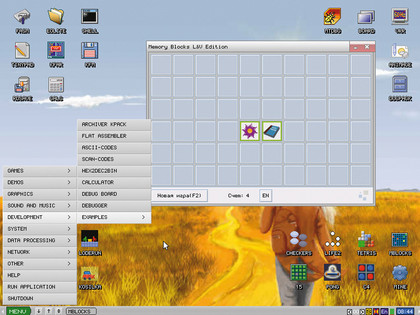
Without a doubt, KolibriOS wins the award for the most ambitious project in this feature. It's a fully fledged OS written entirely in assembly language. The KolibriOS team has managed to squeeze pre-emptive multitasking, a graphical desktop, TCP/IP networking, USB support, media playback and many other features onto a 1.44MB floppy disk.
Booting 'kolibri.img' brings you to the desktop in just a couple of seconds. There's a Windows-like Start menu and taskbar along the bottom of the screen, and the desktop is littered with small utilities.
It's all tremendously impressive, and while KolibriOS will never challenge the main OS trio's desktop supremacy, it shows what can be achieved with careful coding, especially as we're so used to bloatware nowadays.
7. Plan 9
Goal: Research beyond Unix
Web: http://plan9.bell-labs.com/plan9
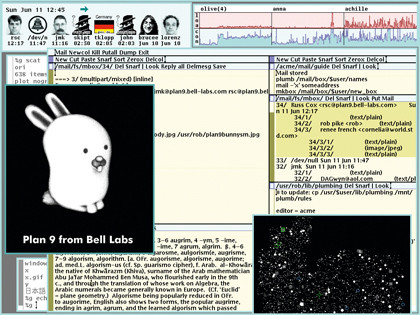
After Unix had flown out of the Bell Labs nest in the 1970s, the developers kick-started a new research project to scratch their programming itches.
Plan 9 aimed to expand beyond the Unix philosophy of representing almost everything as a file: in Plan 9, even network connections and the user interface can be manipulated via the filesystem. Additionally, a communication protocol named 9P was developed to allow Plan 9 machines to share resources.
Get daily insight, inspiration and deals in your inbox
Sign up for breaking news, reviews, opinion, top tech deals, and more.
Ultimately, Plan 9 hasn't achieved anywhere near the same level of success as Unix. However, it's still undergoing development and is a source of new ideas for OS programmers.
The desktop feels quaintly old fashioned today – somewhat akin to the old-school X setups of the late '80s – but then, it's designed primarily to satisfy the needs of Plan 9 programmers. This is not an OS that's going to appeal to many users, but it's an interesting piece of research.
8. FreeDOS
Goal: Maximum compatibility with DOS software
Web: www.freedos.org
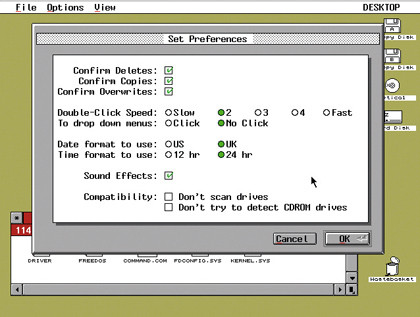
While ReactOS's ambitions are seriously lofty, FreeDOS has a considerably simpler job: running DOS programs. That still involves plenty of work, of course, but DOS has essentially been fixed in place for the last decade, so there aren't new APIs to chase around and implement.
Two CD ISOs are available: Fdbasecd, a small 8MB base system with limited functionality; and Fdfullcd, a 153MB beast packed with software and drivers.
The full version boots into an installer or Live mode. In use, it feels just like the DOS of yore: navigating around directories is the same, there's an excellent EDIT clone and you can even use the mouse with certain text mode apps.
Enter menu to launch the supplied programs and games (there's even a version of FreeDoom included). If you want a graphical desktop, start up OpenGEM.
9. Visopsys
Goal: Small OS focused on disk partitioning
Web: www.visopsys.org
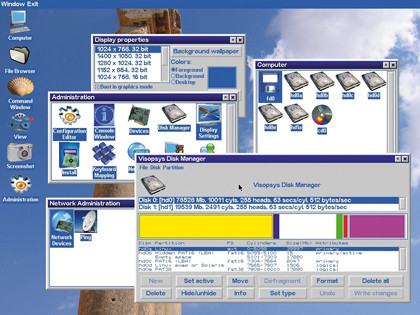
All of the projects covered so far have been the work of many people. Visopsys, however, is particularly striking because it's almost entirely the work of one developer, Andy McLaughlin.
Since he wrote the first lines of code in 1997, McLaughlin has focused on "cherry-picking the best ideas from other operating systems" and produced a compact OS with powerful partition management tools. It even has some spin-off software.
Currently there's little in the way of native software – it's mostly small utilities and desktop tools. Still, Visopsys squeezes onto a single floppy disc, and demonstrates what can be achieved with time and determination.
10. Minix
Goal: Small Unix variant and a learning tool
Web: www.minix3.org
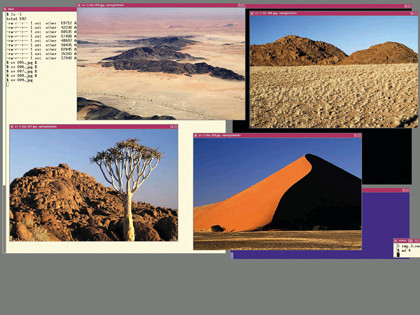
Minix is famous within the alternative OS world for two reasons. First, it was the platform on which Linus Torvalds developed the first version of Linux; and secondly, its code is covered extensively in Operating Systems: Design and Implementation, a book written by the Minix author.
While the first versions of Minix were designed exclusively as learning tools, Minix 3 expands the boundaries further, with low-spec and embedded machines being the main hardware target.
Compared to Linux and the BSD family it's not the most featurerich Unix flavour on the planet, but as a code and design resource for OS developers, it's fantastic.
- 1
- 2
Current page: 6-10: Compact code to DOS compatibility
Prev Page 1-5: Windows on open-source, back to AmigaOS